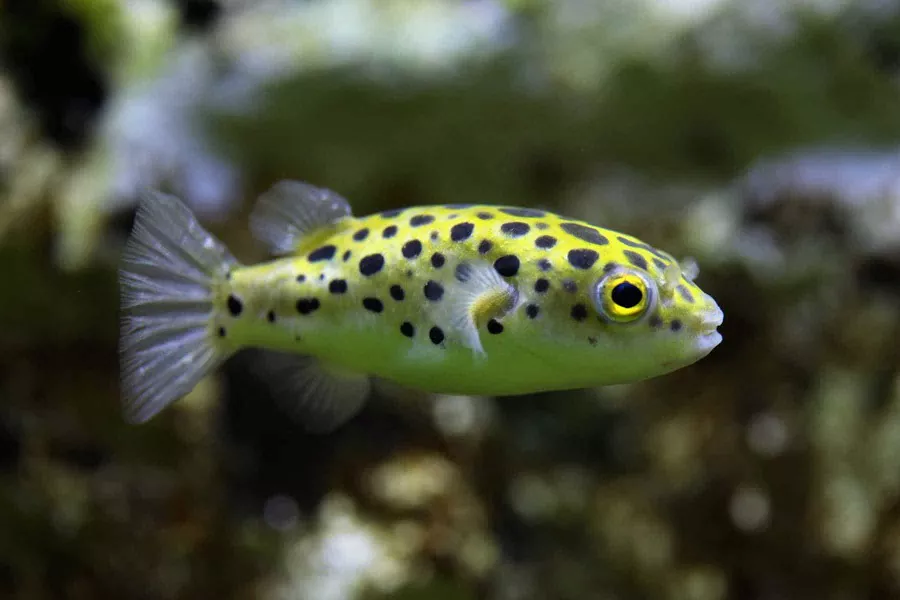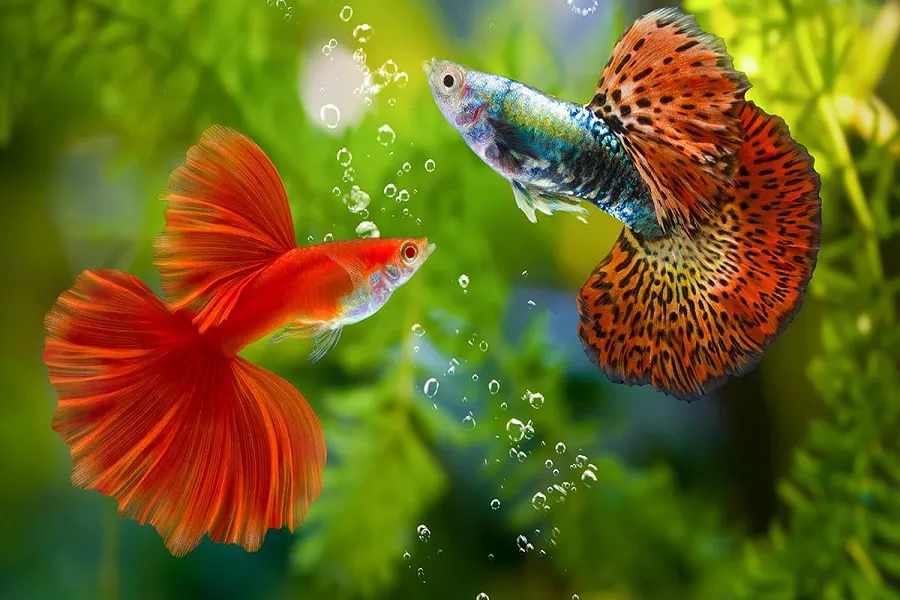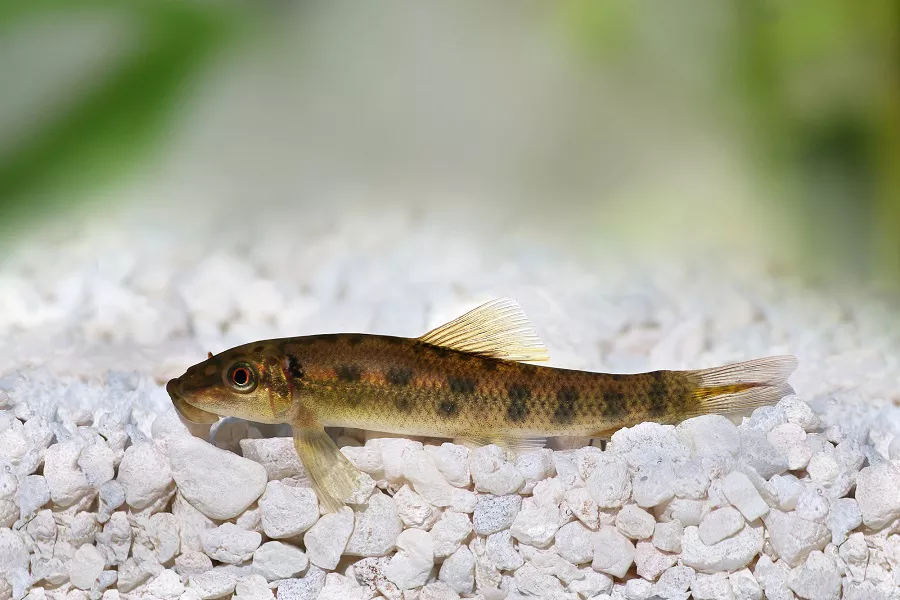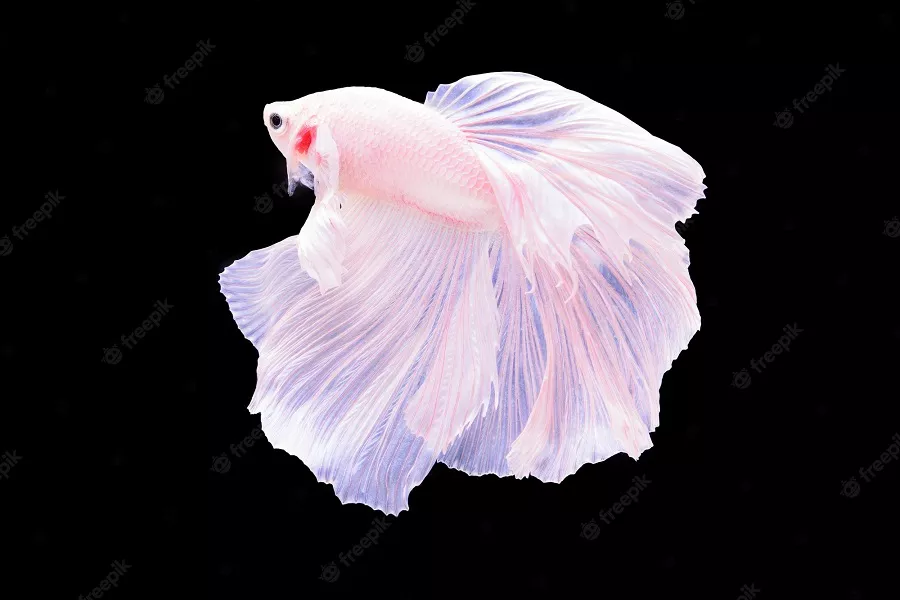What is dichotomyctere nigroviridis?
Dichotomyctere nigroviridis, also known as dark green puffer, scientific name: Tetraodon nigroviridis (Marion de Procé, 1822), is a fish of the genus Tetraodon family. It got its name because it looks like a miniature submarine. Submarine fish live in tropical freshwater waters and the bottom of steam waters, and the adult fish can reach 17 cm in length. When frightened or encountering a natural enemy, it will quickly inhale water or air to expand itself, and the thorns on the epidermis will also stand up, like a thorn ball in the water, making it impossible for natural enemies to swallow it. , so as to achieve the effect of self-defense. Its beautiful spotted pattern and naive look also make it a common ornamental fish.
Submarine fish feed on invertebrates such as crustaceans. Native to India, Myanmar, Sri Lanka, and now also distributed in Thailand, Malaysia, Indonesia and some parts of southern China. The lifespan can be as long as 10 years.
What does dichotomyctere nigroviridis look like?
Adult fish are about 10 to 17 cm long. The body shape is about a horizontal oblong shape, the head is thick and round, and a pair of large protruding eyes is very impressive. The pupils are mainly black and can also appear blue and green. Body surface smooth without scales. The fins are translucent, without pelvic fins, and the caudal peduncle is flat and fan-shaped. It swims only with pectoral fins and short dorsal and anal fins. The fanning speed of each fin is quite fast, but it is not known for swimming speed. It is bounded by the pectoral fins, the skin above (including the back) is golden yellow (greenish) luster, and black round spots are interlaced, similar to leopard print. The skin below (including the abdomen) is a clean white patch. On the forehead there is a particularly bright gold (slightly fluorescent green). Body color in water can change depending on mood or health.
dichotomyctere nigroviridis living habits
This is a miniature puffer fish that lives in tropical steam waters. The so-called “steam water” refers to the estuary of the river, which is the boundary between freshwater fish and marine fish. Every day, due to the inflow of river water, the tide of sea water, and the proportion of water in the steam area are constantly changing. Waters with specific gravity between 1.002 and 1.018 can be called steam waters. Ordinary fish cannot withstand such drastic changes in specific gravity (osmotic pressure), so there are not many fish in the estuary of rivers.
Small boats are inherently resistant to osmotic pressure, which is beyond the reach of ordinary fish. This ability allows the boat to freely shuttle between fresh water, soda, and sea water without any restriction. But from the breeding environment, it is still necessary to simulate the soda water of the growing environment. If kept in fresh water or sea water for a long time, the boat will slowly lose vitality or even die quickly.
Submarine fish have a reproductive migratory habit. They inhabit freshwater waters when they are young. As the fish mature, they gradually turn to high-gravity waters to live in high-density waters.
Submarine fish are carnivorous species with very sharp teeth, which can easily crush the hard shells of general crustaceans and shellfish, and prey on the meat inside. In addition, it hunts other small fish, sea earthworms and other creatures.
Although it is small, it can eat the fins of others and will attack other small fish. It especially likes to bite the tail fins of other fish and even its companions. Its esophagus has a special structure, so that when the submarine fish encounters an enemy or is frightened, it inhales air and water, so that the chest and abdomen swell like a ball, the small thorns on the skin stand up, and float on the water surface to pretend to be dead. Quickly drain the air and water in the chest and abdomen and swim quickly. In addition, it has the habit of biting its teeth, and will make a “cuckoo” sound after being caught.
dichotomyctere nigroviridis rearing
It should be noted here that this fish is a carnivorous fish, so most of them do not eat artificially made pellets. Therefore, it is not acceptable to buy a package of feed when buying fish, because the next thing you will face is the problem of refusal to eat.
There are individual differences in dinghy’s preferences for food, and generally acceptable foods are:
Nematodes (bloodworms)
Source: fish market or roadside fish stall.
Advantages: Most fish shops use nematodes to feed boats. Small boats can also accept this food.
Disadvantages: But feeding nematodes can easily lead to various parasitic or bacterial diseases, so try not to feed dinghies with nematodes. Can not be stored in the refrigerator, you need to buy and feed.
Treatment method: Dilute potassium permanganate solution to soak – but I have doubts about this method because the nematodes themselves are similar to parasites. After soaking in the normal way, most of the nematodes have died, and the nematodes are gray-white, and the nutrient loss is serious. To keep the nematodes immortal, you can only shorten the soaking time or reduce the concentration of the solution, but this is likely to fail to kill the parasites.
Unless it is a last resort, it is best not to feed the boat with nematodes, otherwise there will be endless troubles.
Reminder: For more knowledge about tiger fish, arowana, australian lungfish, please pay attention to: mtedr.com, to provide you with types of aquarium fish and fish care.


























